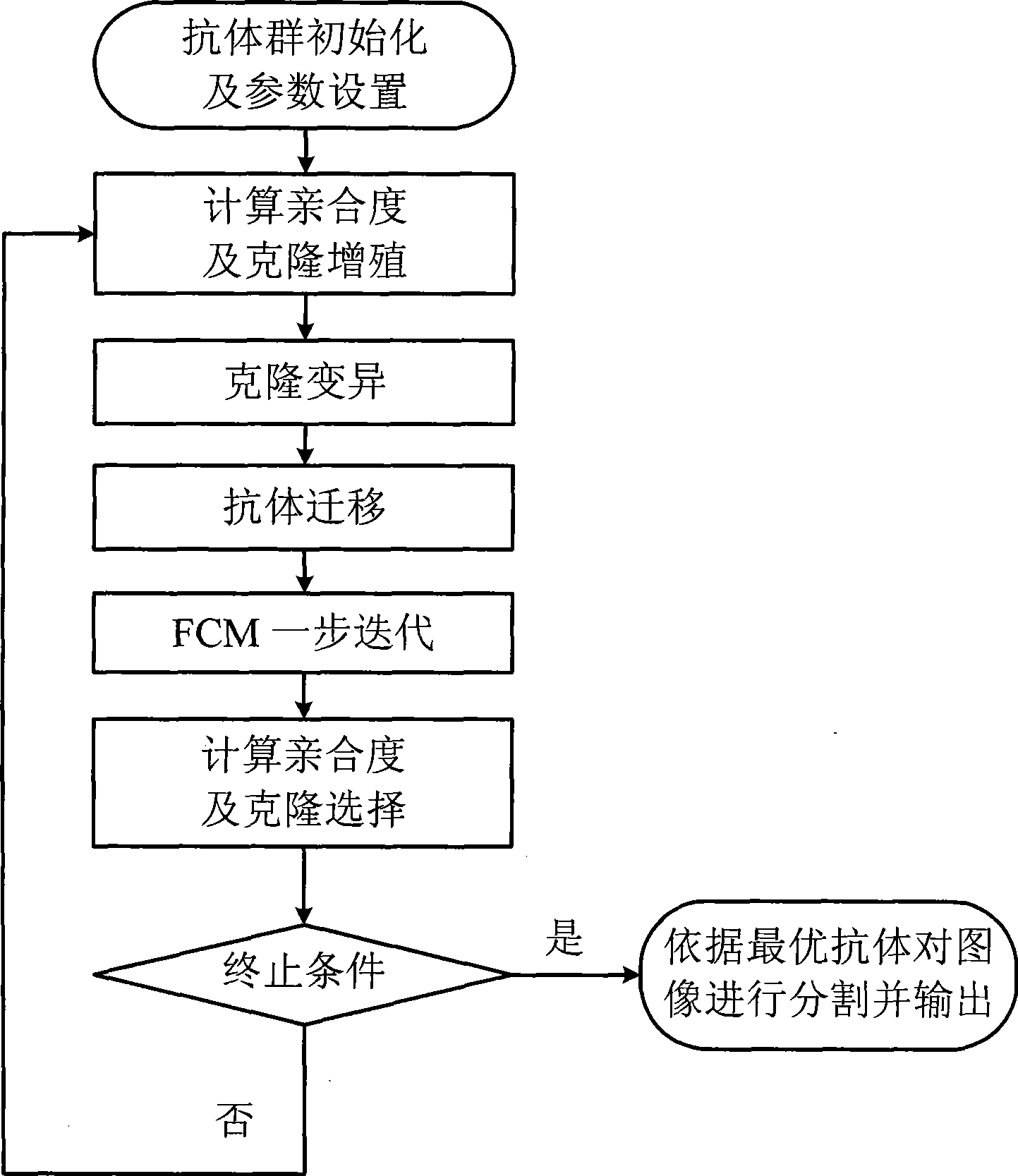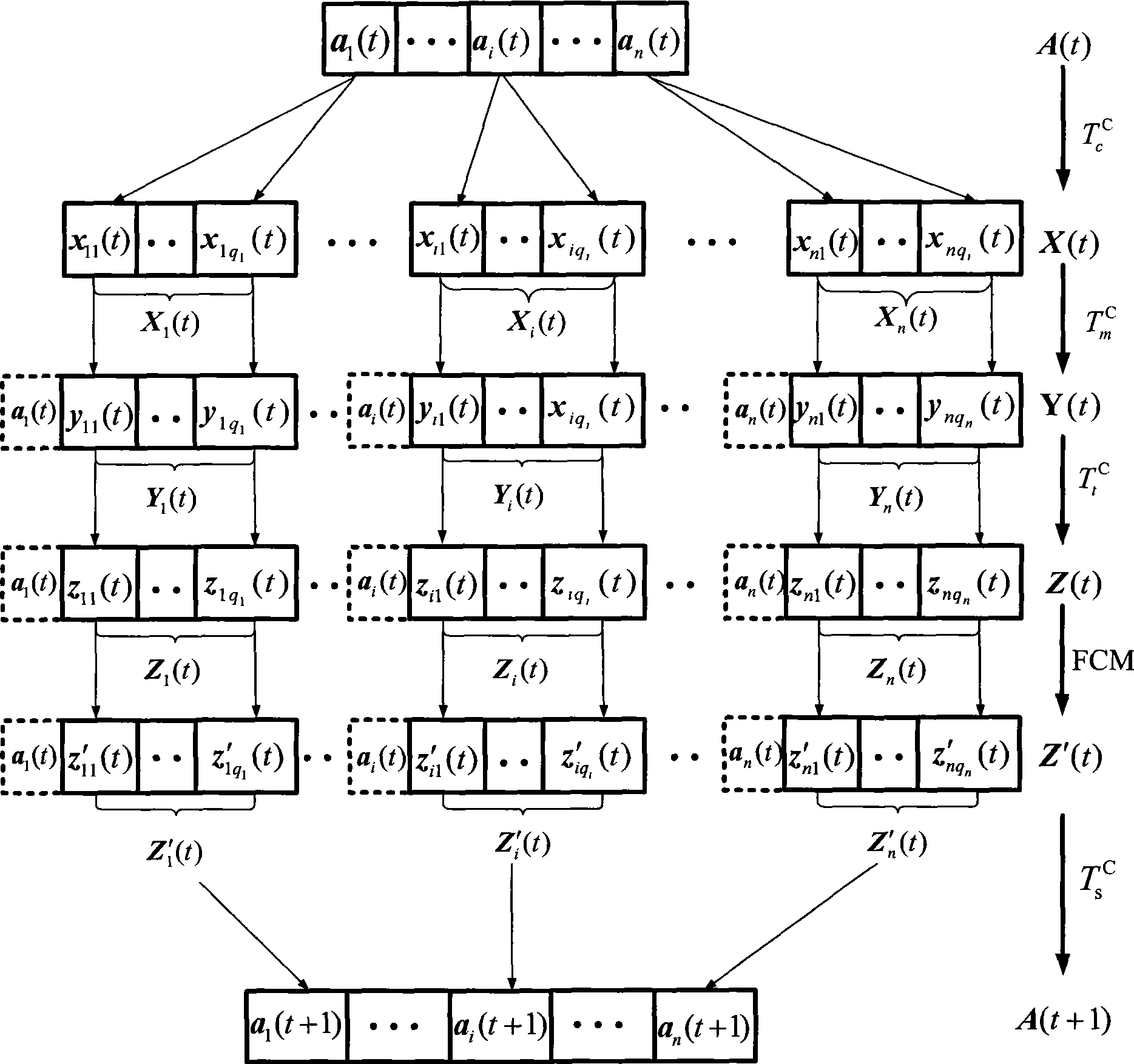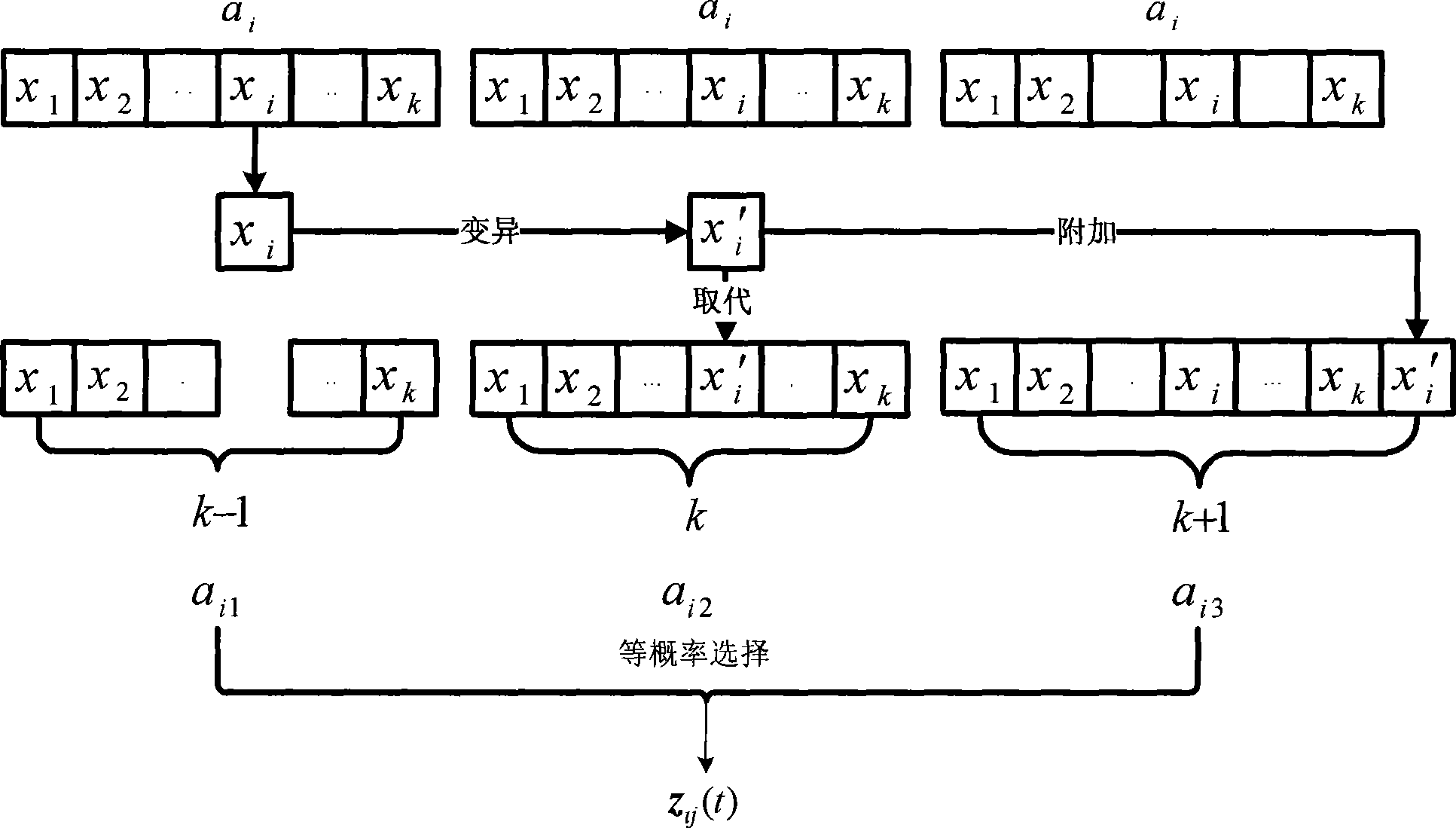Nonsupervision image segmentation process based on clone selection
An image segmentation and clone selection technology, applied in the field of image processing, can solve problems such as unguaranteed segmentation results, poor reliability, and poor stability
- Summary
- Abstract
- Description
- Claims
- Application Information
AI Technical Summary
Problems solved by technology
Method used
Image
Examples
Embodiment Construction
[0034] The problem of unsupervised image segmentation can be abstracted as the problem of unsupervised clustering of image pixels according to the gray value.
[0035] refer to figure 1 and figure 2 For the specific problem of unsupervised image segmentation, the specific implementation steps of the unsupervised image segmentation method based on clone selection designed by the present invention are as follows:
[0036] Step 1. Antibody group initialization and parameter setting.
[0037] (1a) Read the original image to obtain the following information: grayscale G = { g 1 , g 2 , · · · , g i , · · · , g N g ...
PUM
 Login to View More
Login to View More Abstract
Description
Claims
Application Information
 Login to View More
Login to View More - R&D
- Intellectual Property
- Life Sciences
- Materials
- Tech Scout
- Unparalleled Data Quality
- Higher Quality Content
- 60% Fewer Hallucinations
Browse by: Latest US Patents, China's latest patents, Technical Efficacy Thesaurus, Application Domain, Technology Topic, Popular Technical Reports.
© 2025 PatSnap. All rights reserved.Legal|Privacy policy|Modern Slavery Act Transparency Statement|Sitemap|About US| Contact US: help@patsnap.com



